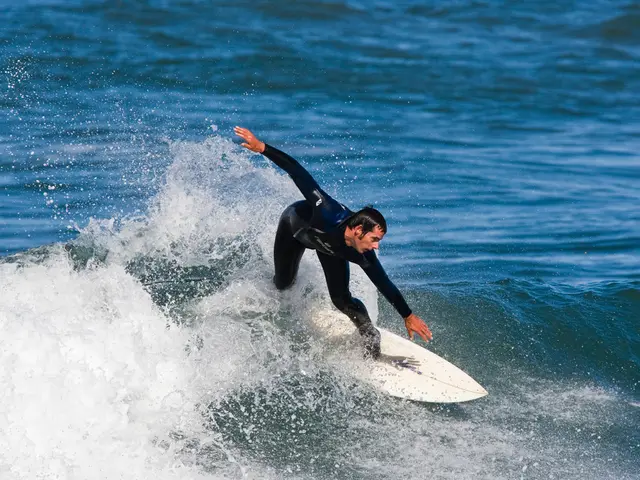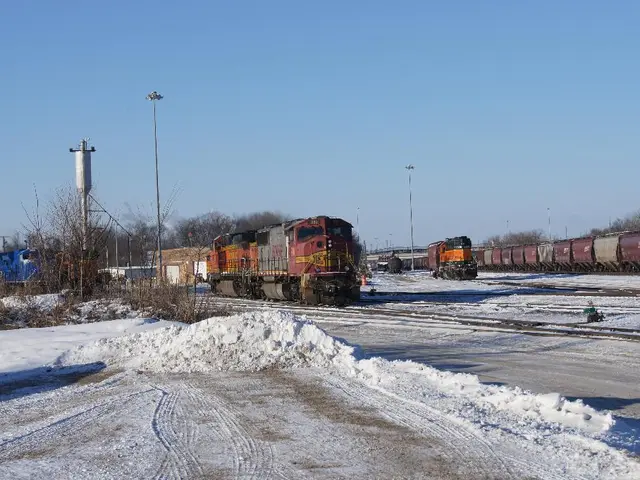Technology-driven transformation reshaping tourism landscape: tech not merely an instigator, but a potential remedy for overtourism
In the age of social media, millions of travelers are being inspired to explore the world, with popular posts on platforms like TikTok and Instagram sparking sudden tourist explosions in small resorts. This digital wave is transforming the tourism landscape, as destinations once unknown to many become mass pilgrimage centers with just one viral video.
However, this influx of travelers is putting a strain on local infrastructure and deteriorating the quality of life for local residents. To address this challenge, the development of technologies, particularly digital tools, is proving to be a key factor in the recent increase in global tourist flows.
Smart cities are implementing digital booking systems for visiting attractions and limiting access to certain areas to maintain a location’s uniqueness and ensure a comfortable environment for both residents and visitors. Real-time demand-shaping frameworks monitor and influence tourist flows based on live data to prevent overcrowding and optimize visitor distribution.
Real-time crowd monitoring technologies, along with digital visitor caps and timed entry ticketing, are being trialed to control the number of tourists in sensitive or heavily visited locations. These tools are aimed at alleviating peak-time congestion and spreading visits more evenly over time.
Digital support programs for local small and medium-sized enterprises (SMEs) in tourism help businesses establish an online presence and leverage digital tools to diversify their offerings and reach, thus supporting local economies while managing tourism growth sustainably.
Location intelligence platforms integrate multisource data on visitor behavior, spending, mobility, and environmental impact to provide municipalities and cultural sites with actionable insights. This supports better public service planning, transport management, and policies tackling overtourism directly.
Immersive technologies and gamified augmented reality (AR) enhance cultural tourism by spreading visitor interest across broader areas and times. For example, AR platforms create engaging, location-based experiences that encourage exploration beyond typical hotspots, reducing localized pressures on landmarks.
The use of generative AI tools by travelers is growing, with many actively shaping their travel plans to avoid overcrowded destinations. This trend offers potential for personalized, dynamic trip planning that can further help distribute visitor flows efficiently.
Together, these digital strategies aim to balance high visitor numbers with the protection of local communities and infrastructure by using data, technology, and digital engagement as core tools. Technology is increasingly becoming a tool for sustainable tourism management, rather than an enemy.
The advent of AI in tourism offers the potential for predicting peak loads on tourist zones and suggesting alternative routes, thus evenly distributing tourist flows. This could be particularly useful for megacities and historic centers struggling with seasonal influxes of visitors.
AI and virtual technologies are still testing their strength in tourism, adding another layer of complexity to efforts to balance industry growth. Overtourism is not yet defeated, but digital tools offer a first chance at controlled development.
[1] Real-time demand-shaping frameworks: https://www.nature.com/articles/s41467-020-19346-6 [2] Real-time crowd monitoring technologies: https://www.sciencedirect.com/science/article/abs/pii/S0965856419317042 [3] Digital support programs for local SMEs: https://www.ncbi.nlm.nih.gov/pmc/articles/PMC7495683/ [4] Location intelligence platforms: https://www.eventwood.com/ [5] Use of generative AI tools by travelers: https://www.sciencedirect.com/science/article/abs/pii/S0965856419317042
Technology plays a significant role in shaping the lifestyle of modern travelers, with real-time demand-shaping frameworks and digital booking systems transforming the way tourists explore destinations. These tools help manage overcrowding and optimize visitor distribution, ensuring a comfortable environment for both residents and visitors.
These advancements, such as real-time crowd monitoring technologies and digital support programs for local SMEs, are critical in fostering sustainable tourism growth, especially in light of the challenges posed by overtourism. By leveraging AI, AR, and location intelligence, it is possible to create a balanced tourism landscape that respects and preserves the quality of life for local communities. (References: [1], [2], [3], [4], [5])




